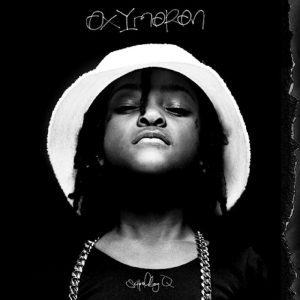Right off the bat, the title track of ScHoolboy Q’s third studio LP sets the stage for the rest of the album as Q rattles into the hook: “Gangsta, gangsta, gangsta, gangsta, gangsta, gangsta (x4).” To be clear, that’s 24 “gangstas” per hook.
ScHoolboy Q doesn’t claim to be an amazing lyricist – that’s not really the point of his music. Rather, his gangsta-rap style is reminiscent of the lesser-known members of NWA.
It’s hard to find versatility in the genre of gangsta-rap, but what sets Oxymoron apart from his other releases is the wide variety of beats he spits over. From an instrumental perspective, there is a bit of disjointedness, but the diversity is refreshing and can be attributed to the fact that there is a different producer on almost every single track.

At times, the beats seem a little too detailed, introspective, and mature for Q’s style, especially on “Prescription-Oxymoron.” Nevertheless, the song itself is possibly the best on the album, as Q takes a break from the thuggish diction to reveal part of his early life on this moody, subdued track.
Partway through the song, though, the beat changes and Q reverts back to a superficial, over-the-top spew of violent flows, and the listener completely forgets about the tinge of meaning that graced the first part of the song.
A large part of Q’s appeal, apart from his nauseatingly shocking imagery, is his voice, which is decidedly different depending on what he’s rapping about.
It seems like Q is trying to sell some sort of story, which comes through on tracks like “Hoover Street” and “Prescription-Oxymoron,” but the details of the plot aren’t clear enough to distinguish it from any other story about hustlin’, gang-banging, and slinging crack.
Many have compared Oxymoron to Kendrick Lamar’s critically acclaimed “good kid, m.A.A.d city,” but in reality, the only similarities between the two are in subject matter. While both are about the gang-banging lifestyle, Q’s album seems to conform to it, while GKMC criticizes and satirizes it.
Still, once you get past the veneer of gruff demeanor, Q’s flows are genuine, consistent, and downright steely.
There’s a lot of filler in Oxymoron, but there are also some hits that set this album apart from others in its genre.
















